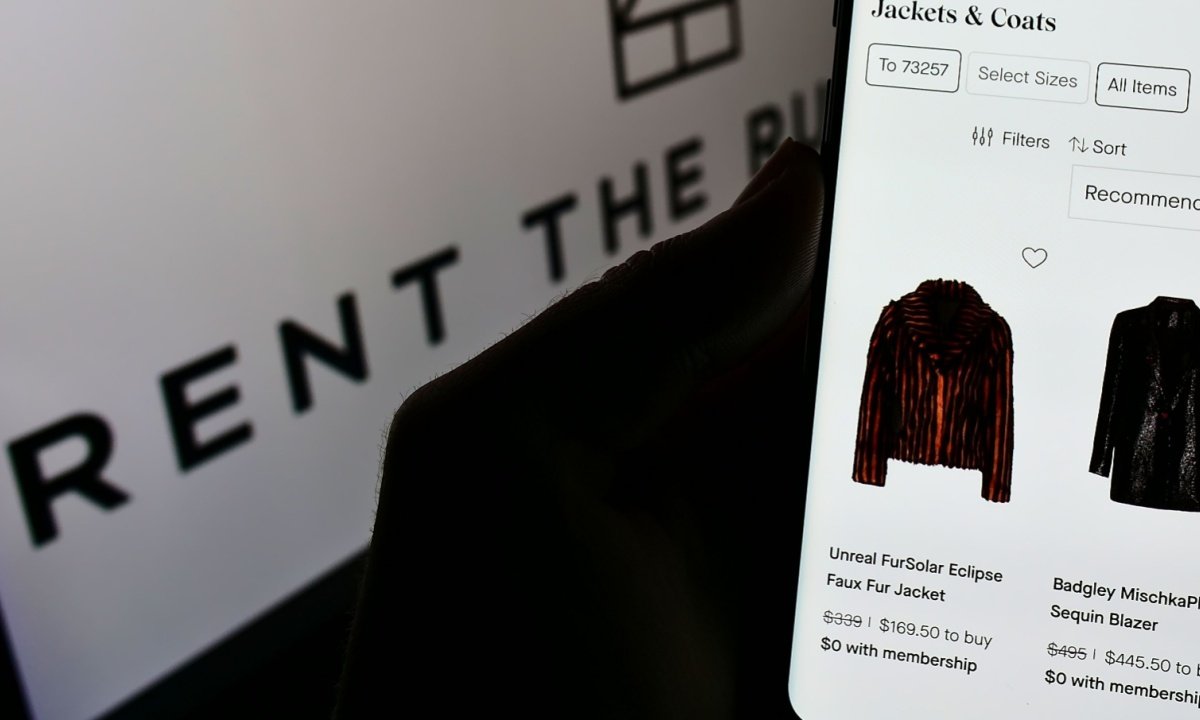Business
Buy, build or hybrid? How to develop your company’s AI ecosystem

Dr. Foteini Agrafioti is the senior vice-president for data and artificial intelligence and chief science officer at Royal Bank of Canada.
As organizations consider adopting artificial intelligence, they are faced with three options: build the AI technology in-house, buy it from a third-party vendor or develop a hybrid solution with third-party support.
These options have pros and cons but one constant should exist across all models: organizational support. Stakeholders, from business leaders, technology teams, functional partners and end users must have a strong understanding and commitment to the AI approach if it is to be successful.
The main benefit of building a proprietary AI solution is customization. An organization has full control over a product, its capabilities, data security, design and ensuring it’s tailored to business needs.
A solution that is custom built for a specific problem is typically also more accurate because it is truly adapted to the business specifications. As statisticians always argue, an off-the-shelf tool may be able to achieve a good enough predictive accuracy, but a tool that is designed for the specific data problem will always surpass that.
In-house development allows teams to focus precisely on the business problem while ensuring safety and security requirements are met. This approach also provides flexibility, so the technology can adapt to evolving business needs.
But building everything in-house can be time consuming and expensive. Drawbacks of in-house development include costly upfront and ongoing investment in talent, technology and infrastructure. Commoditized technology can be easily leveraged and deployed to save time, scale and achieve business results faster.
Commercial platforms and products have unique value propositions, including the advantage of leveraging ongoing vendor investment and speed to market – they are limited in customization which can be restrictive when it comes to maintaining a competitive market advantage.
A hybrid ecosystem balances customization, investment and speed to market. RBC approaches the architecture of our AI ecosystem by first focusing on the needs of our business, inferring a set of necessary capabilities and then selecting suppliers for those capabilities, including building in-house where we see an advantage. We engage with products from different vendor partners but retain the option to switch to competitive products or build alternatives internally.
With 19 million global clients across five businesses, we have access to data comprising billions of client transactions, which is why industry-leading products in combination with our proprietary AI models such as ATOM deliver the most value for our business.
To accomplish this, we’ve developed a standardized environment for the development and deployment of services, which embeds all necessary security and resiliency controls but also makes it easy for development teams to adopt and use every day.
While this infrastructure is necessary because of the sensitive data we host, such as personal and financial information, it may not be a priority for businesses operating in a less risk-averse sector. For these businesses or even for segments of RBC where we have less need for strict governance, adopting commonly available vendor AI products can provide a good return on investment.
We bring all our data together onto a centralized data platform, Lumina, that systematically collects and curates data across business lines and enables us to build cutting-edge AI in a safe and scalable way.
Delivering innovative AI models and solutions requires diverse and deep collections of data and Lumina provides this while ensuring that all data is used only according to our strict privacy and data protection policies. It’s true that executing on a hybrid strategy requires a deep investment in talent and culture, but it also requires organizational support and collaboration across the business to solve real complex problems.
So, the question remains: how should an organization build its AI ecosystem? The key lesson we have learned is that no solution is ever fully build-or-buy – a healthy environment is a blend of both.
An organization may consider buying a product when there’s no competitive advantage to building a customized version of the same capability, given the product meets organizational requirements such as security, reliability and ethics. Examples of this are using a customer support chat bot, engaging in personalized email marketing or providing customers with recommendations for their next purchase based on their transaction history.
Building a product may be an option when there is an opportunity to integrate valuable intellectual property that likely won’t be available in an off-the-shelf product such as proprietary algorithms or data sets.
While each strategy has its distinct advantages and drawbacks, focusing on the needs of the business will help establish an optimal operating model that supports the necessary capabilities required to successfully deploy an AI ecosystem effectively and securely.
This column is part of Globe Careers’ Leadership Lab series, where executives and experts share their views and advice about the world of work. Find all Leadership Lab stories at tgam.ca/leadershiplab and guidelines for how to contribute to the column here.
Business
Alibaba’s Shares Soar After Investors Buy Into Big AI Moves

(Bloomberg) — Alibaba Group Holding Ltd.’s stock gained the most in about two weeks after the company initiated a series of moves intended to shore up its place in China’s AI development boom.
The e-commerce leader’s shares climbed more than 7% in early Hong Kong trading, tracking an overnight gain in the US. That takes the Chinese company’s gain to over 80% this year, a rally driven by aggressive moves to expand into the fledgling field of artificial intelligence.
Alibaba this week raised $3.2 billion in convertible bonds to bankroll the country’s biggest AI infrastructure budget and cloud service. It unveiled updates to flagship Qwen-series models designed to compete with DeepSeek and OpenAI. And The Information reported that Alibaba and Baidu Inc. are starting to employ in-house chips in the training of artificial intelligence, replacing costly Nvidia Corp. accelerators. Baidu’s stock rose close to 13% in Hong Kong to its highest since October 2024.
Alibaba is staging a comeback after years of regulatory scrutiny hammered its internet business. The firm co-founded by Jack Ma has established itself this year among the frontrunners of a nationwide AI frenzy. It’s since declared itself wholly in pursuit of artificial general intelligence — the holy grail for many tech companies.
Its recent moves coincide with growing optimism about the outlook for a technology expected to revolutionize industry and economies. This week, Oracle Corp. helped ignite a sectoral rally after delivering a blowout outlook for global AI spending.
“Alibaba’s recent moves have shifted investors’ focus completely to its AI potential, offsetting the concerns about its price wars in food delivery,” said Paul Pong, a managing director at Pegasus Fund Managers. “With the capability of producing its own chips, it should create more growth drivers.”
The stock gains come even as Alibaba wages war with deep-pocketed rivals on another front.
This week, the company declared it was sinking more money into incentives and subsidies to power its local services and e-commerce business. It’s committing another 1 billion yuan ($140 million) of incentives to drive more traffic to one of its most popular online services, cranking up the heat on JD.com Inc. and Meituan in their ongoing battle for Chinese consumers.
Some analysts regard that as a positive given it’s competing hard for users to drive its core business. But others point to margin erosion at a time AI’s monetization potential remains elusive.
What Bloomberg Intelligence Says
Alibaba’s latest AI model releases, including the more efficient Qwen3-Next and 1-trillion-parameter Qwen-3-Max-Preview, should support demand for its cloud services. However, returns from the segment are set to remain poor, given low margins and disproportionately high capital costs. Quarterly adjusted Ebita in the cloud intelligence division rose by just $86 million in the 12 months ended June 2025. Tencent remains better placed to generate a near-term return on AI, in our opinion.
– Robert Lea and Jasmine Lyu, analysts
Click here for the research.
(Updates with Baidu’s stock from the third paragraph.)
More stories like this are available on bloomberg.com
Business
Databricks AI Chief to Exit, Launch a New Computer Startup

(Bloomberg) — Naveen Rao, the head of artificial intelligence at the $100 billion startup Databricks Inc., is planning to leave his position to launch a new venture making a novel type of computer, according to a person familiar with the matter.
A spokesperson for Databricks confirmed that Rao is transitioning to an advisory role at the company, and said that Databricks is planning to invest in his new startup. The spokesperson declined to disclose the size of the investment.
Rao has also held early talks with other investors about backing the new company, which would focus on building a next-generation computer to address the rising costs of AI computing power, said the person familiar with the conversations, who asked not to be named discussing private information.
Rao declined to comment on his plans for the new company.
Rao is a serial entrepreneur who sold his data and AI analytics startup MosaicML to Databricks in 2023 for $1.3 billion. MosaicML had raised about $30 million from investors including Maverick Ventures, Lux Capital and DCVC. Before that, Rao co-founded Nervana Systems, a machine intelligence platform, which was acquired by Intel Corp. in 2016 for about $350 million.
Given Rao’s track record, the new venture could attract significant investor interest at a lofty valuation. He would also join a wave of prominent tech executives who’ve launched startups, including former OpenAI Chief Technology Officer Mira Murati, whose company Thinking Machine Labs was last valued at $10 billion, and ex-Salesforce co-CEO Bret Taylor, whose two-year-old AI startup Sierra was also recently valued at $10 billion.
Databricks recently raised $1 billion in a funding round that made it one of the country’s most valuable startups. The round was co-led by Andreessen Horowitz, Insight Partners, MGX, Thrive Capital and WCM Investment Management.
More stories like this are available on bloomberg.com
Business
Rent the Runway Adds AI Enhancements Amid Transformation

Rent the Runway is continuing to roll out new personalized recommendations and artificial intelligence (AI)-powered enhancements as part of a wide-ranging transformation of its fashion subscription, rental and resale platform.
-

 Business2 weeks ago
Business2 weeks agoThe Guardian view on Trump and the Fed: independence is no substitute for accountability | Editorial
-
Tools & Platforms1 month ago
Building Trust in Military AI Starts with Opening the Black Box – War on the Rocks
-

 Ethics & Policy2 months ago
Ethics & Policy2 months agoSDAIA Supports Saudi Arabia’s Leadership in Shaping Global AI Ethics, Policy, and Research – وكالة الأنباء السعودية
-

 Events & Conferences4 months ago
Events & Conferences4 months agoJourney to 1000 models: Scaling Instagram’s recommendation system
-

 Jobs & Careers2 months ago
Jobs & Careers2 months agoMumbai-based Perplexity Alternative Has 60k+ Users Without Funding
-

 Podcasts & Talks2 months ago
Podcasts & Talks2 months agoHappy 4th of July! 🎆 Made with Veo 3 in Gemini
-

 Education2 months ago
Education2 months agoMacron says UK and France have duty to tackle illegal migration ‘with humanity, solidarity and firmness’ – UK politics live | Politics
-

 Education2 months ago
Education2 months agoVEX Robotics launches AI-powered classroom robotics system
-

 Funding & Business2 months ago
Funding & Business2 months agoKayak and Expedia race to build AI travel agents that turn social posts into itineraries
-

 Podcasts & Talks2 months ago
Podcasts & Talks2 months agoOpenAI 🤝 @teamganassi











